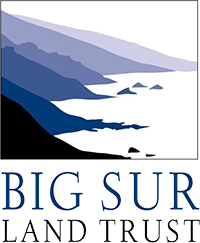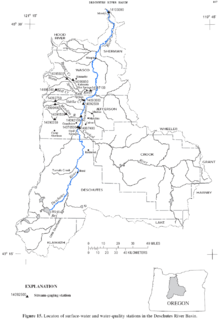The conservation movement, also known as nature conservation, is a political, environmental, and social movement that seeks to manage and protect natural resources, including animal, fungus, and plant species as well as their habitat for the future. Conservationists are concerned with leaving the environment in a better state than the condition they found it in. Evidence-based conservation seeks to use high quality scientific evidence to make conservation efforts more effective.

Edmonton is the capital city of the Canadian province of Alberta. Edmonton is on the North Saskatchewan River and is the centre of the Edmonton Metropolitan Region, which is surrounded by Alberta's central region. The city anchors the north end of what Statistics Canada defines as the "Calgary–Edmonton Corridor".
Land trusts are nonprofit organizations which own and manage land, and sometimes waters. There are three common types of land trust, distinguished from one another by the ways in which they are legally structured and by the purposes for which they are organized and operated:

Parkland County is a municipal district in central Alberta, Canada. Located west of Edmonton in Census Division No. 11, its municipal office, Parkland County Centre, is located 0.25 km (0.16 mi) north of the Town of Stony Plain on Highway 779.
The Canada National Parks Act is a Canadian federal law that regulates protection of natural areas of national significance. As of March 2019, the Canada National Parks Act extended federal protection to 47 national parks and park reserves across the country covering more the 300,000 km2 of habitat. The current Canada National Parks Act received royal assent on October 20, 2000 and has been amended since. The first national parks act in Canada was created in 1887 shortly following the creation of the world's first national park, Yellowstone National Park, in the United States. In 1911, under a renewed national parks act, Canada became the first country in the world to establish their own national parks service.
Natural Lands is a non-profit land conservation organization with headquarters in Media, Pennsylvania, dedicated to the management, protection, and conservation of eastern Pennsylvania and southern New Jersey's native forests, fields, streams, and wetlands. The organization owns and manages 44 nature preserves—totaling more than 23,000 acres—located in 13 counties in Pennsylvania and New Jersey. Nineteen of the preserves are open to the public for recreational use; the others have limited visitation due to the presence of sensitive ecosystems or limited facilities.
The Canadian Wildlife Federation is a Canadian non-profit organization dedicated to wildlife conservation.
The Alabama Department of Conservation and Natural Resources (ADCNR) is the state agency responsible for the conservation and management of Alabama's natural resources including state parks, state lands, wildlife and aquatic resources. ADCNR also issues hunting and fishing licenses for the state. The department promotes wise stewardship and enjoyment of the state's natural resources through five divisions: Marine Resources, State Lands, State Parks and Wildlife and Freshwater Fisheries. Supporting those divisions are seven support sections: Accounting, Diversity and Recruiting, Engineering, Information and Education, Information Technology, Legal, and Personnel and Payroll.

The Snow Leopard Trust is the largest and oldest organization working solely to protect the endangered snow leopard and its habitat in 12 countries of Central Asia. The trust is a non-profit organization with its headquarters in Seattle, Washington. The present total population of snow leopards in the wild is estimated at between 3,920 and 6,390.
The Rideau Valley Conservation Authority (RVCA) is an inter-municipal environmental protection and advisory agency that works with local municipalities, government agencies, special interest groups and the general public to protect the natural resources of the Rideau River watershed. The watershed drains an area of over 4,000 square kilometres of eastern Ontario and includes towns such as Portland, Perth, Smith Falls, Merrickville, Kemptville, and Manotick. About 620,000 live in the watershed, mostly deriving from the City of Ottawa. There are 18 municipalities within the valley and most people, outside of Ottawa, draw their drinking water from the river or from groundwater.

The World Wildlife Fund Inc. (WWF) is an international non-governmental organization founded in 1961 that works in the field of wilderness preservation and the reduction of human impact on the environment. It was formerly named the World Wildlife Fund, which remains its official name in Canada and the United States.
Environment and Parks is the Alberta provincial ministry of the Executive Council of Alberta responsible for environmental policy and sustainable resource development. In "Optimizing Alberta Parks" published in March 2020, Parks Alberta announced that in 2020, about a third of the province's parks and protected and recreation areas would be closed or handed over to third parties in a cost-saving measure.
Pacific Forest Trust is an accredited non-profit conservation land trust that advances forest conservation and stewardship solutions. Its mission is to sustain America’s forests for their public benefits of wood, water, wildlife, and people’s wellbeing, in cooperation with landowners and communities.

The Big Sur Land Trust is a private 501(c)(3) non-profit located in Monterey, California, that has played an instrumental role in preserving land in California's Big Sur and Central Coast regions. The trust was the first to conceive of and use the "conservation buyer" method in 1989 by partnering with government and developers to offer tax benefits as an inducement to sell land at below-market rates. As of 2016, it has protected around 40,000 acres (16,187 ha) through acquisition and resale to government agencies. It has added conservation easements to another 17,000 acres (6,880 ha) and has retained ownership of a number of parcels totaling about 4,500 acres (1,821 ha).

The Deschutes Land Trust is a private charitable conservation organization focused on preserving natural landscapes and rivers in the Deschutes River Basin in Oregon, USA. The Trust was formed in 1995, and since then has grown to conserve more than 7,000 hectares of land in over 17 preserves.

Conservation land trusts are nonprofit organizations that acquire and steward land or conservation easements for the purpose of achieving environmental, agricultural, recreational, and/or species conservation goals. Conservation land trusts often work in cooperation with landowners to achieve shared goals and may provide public outreach events on the themes of science, environmental issues, species conservation, or other topics relevant to the land they work to protect. Priorities of conservation land trusts vary, but may include goals related to water quality, public access to land, and biodiversity. Oversight of these priorities and of the work carried out by the land trust typically rests with a board of directors. Conservation land trusts may operate in partnership with government agencies or under broader umbrella nonprofit organizations. Land trusts may focus their work in specific local areas delineated by political boundaries, habitat types, or ecological zones. Funding can be limited for the work of these organizations, such that many rely on volunteer labor.








